This week my blog will be on our mischievous mob of Meerkats Suricata suricatta.
We currently have 5 adults Bill, Ken, Ariel, Kiara, Pinky and excitingly we now also have 3 babies, born on May 4th. At the moment we don’t know their genders but I think with their date of birth being May 4th they should have Star Wars names, so watch this space!
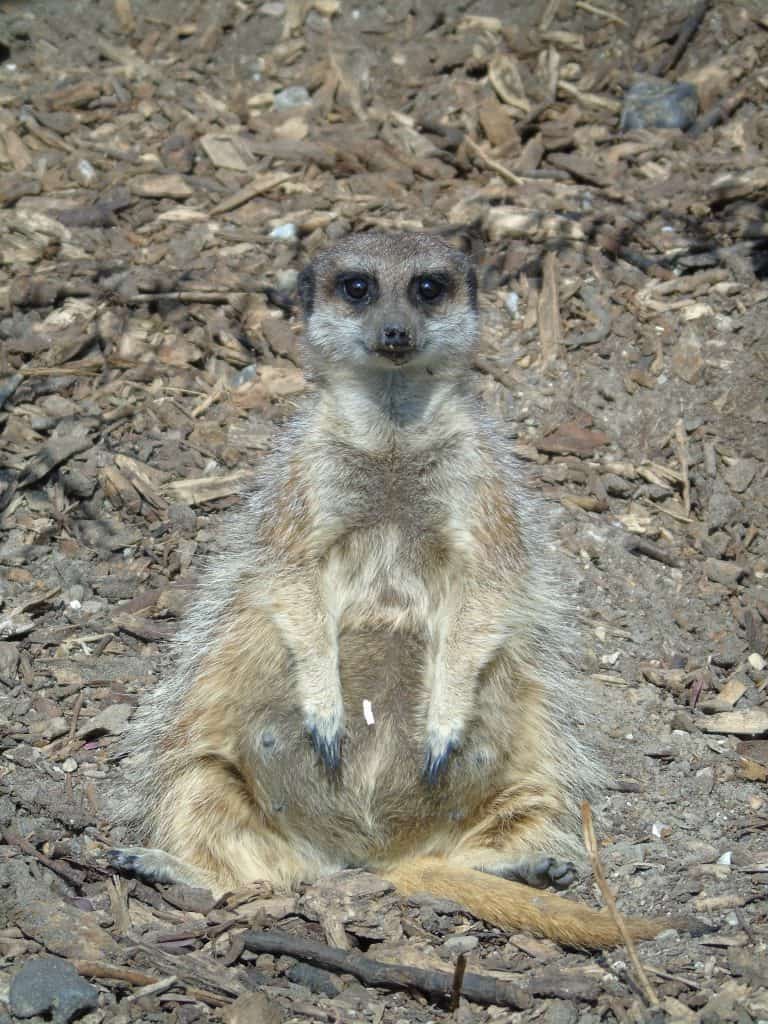
Apart from the babies, all individuals are quite different in shape, size, colour and personality much like us really.
Females can give birth up to eight babies at a time but its more common for them to have three or four offspring at a time. The pups are born underground where they are safe from predators. Being blind, deaf and almost hairless makes them an easy snack so it’s safer to stay underground in those crucial first days in their life.
The whole family pitches in to help raise the pups, including the father and siblings. Their eyes open after two weeks, and pups start eating food (other than milk) at three weeks. When they are four weeks old, the pups first venture out of their den and are weaned by nine weeks. When they reach one and a half years the meerkats will be mature enough to have their own offspring. They can live for up to 8-10 years in the wild and or 12-15 years in captivity.

Babysitting
Our group share the duty of raising the pups by teaching them how to hide, hunt and clean. Ariel (who is mum) needs to spend time foraging to supply her pups with milk, so other females and males stay behind to care for and protect the little ones.

The mob may sometimes decide to move to a different burrow, and these babysitters help transport the pups, carrying them by the scruff of the neck. Both pups and adults are very vocal, they make a peeping sound when playing, which rises to a louder twitter when they are excited, and purr when content.
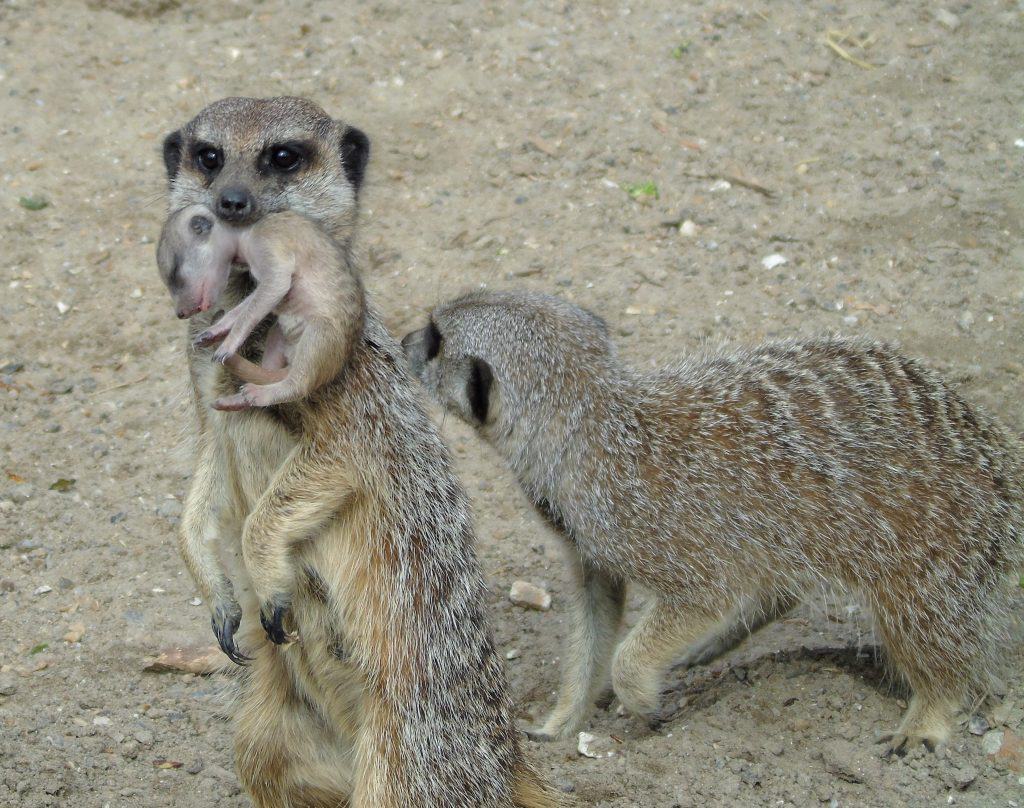
Adults
A small diurnal member of the mongoose family, they are mainly insectivores but they will also eat lizards, snakes, spiders, plants, eggs and small mammals. Interestingly they have developed an immunity to many venoms, which allows them to eat scorpions (including the stinger) and some snakes without the fear of illness or death.
Our gang is always thinking about their stomachs, especially now there are extra mouths to feed. They’re always digging around for something tasty on the menu.
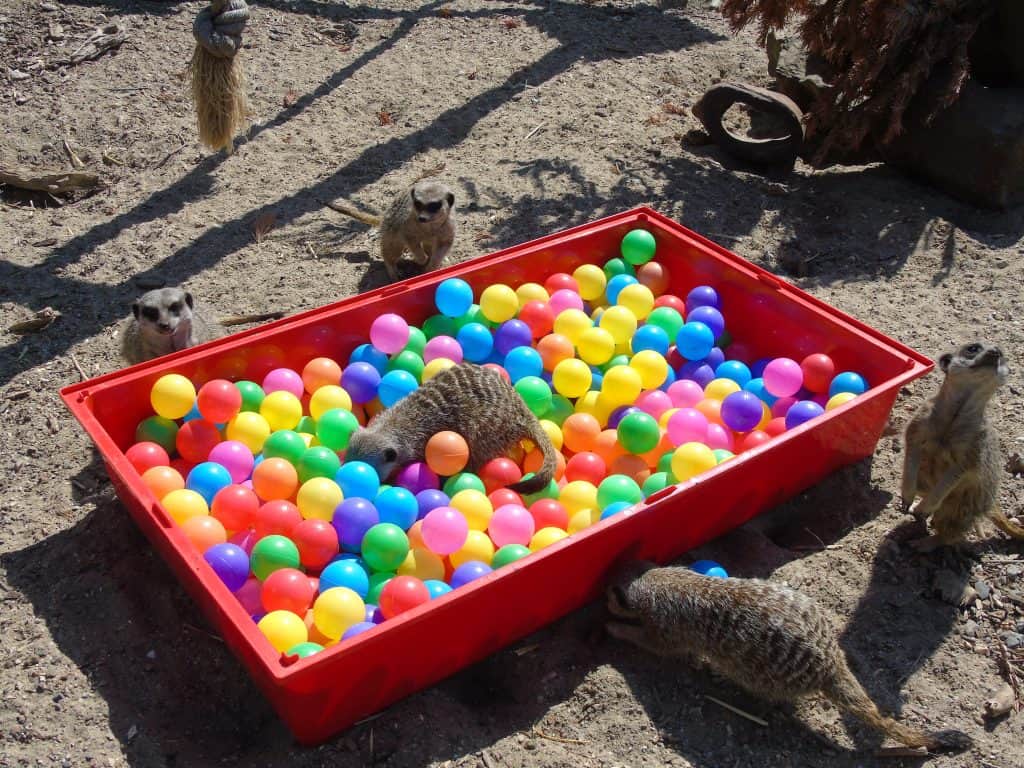
They have strong curved claws used for digging for prey and altering their underground burrows. When they aren’t eating or sleeping you’ll often see them sunbathing, the underside of a meerkat has no markings. A patch on their belly which is only sparsely covered in hair shows the black skin underneath. They use this area on their belly to absorb heat, you may have seen them do this when they stand on their rear legs. Saying that though, with this lovely hot weather recently they seem to be enjoying the shade too.

Meerkats are burrowing animals living in large underground networks with multiple entrances. On average there are 15 entrance and exit holes, which they leave only during the day. At Wingham we have given our group two different substrates in their enclosure, sand and woodchip.
In the wild they are found in southern parts of Africa which is dominated by the Kalahari desert, where there is little rainfall and is 10 times the size of Great Britain, this land is covered by a soft sand. However, it seems the mob at Wingham enjoy digging down into the woodchip, they’ve made their own tunnel system which is great to see as this is exactly what they’d be doing in the wild. Keeping us busy with topping the woodchip up and keeping them busy with lots of tunnel making.
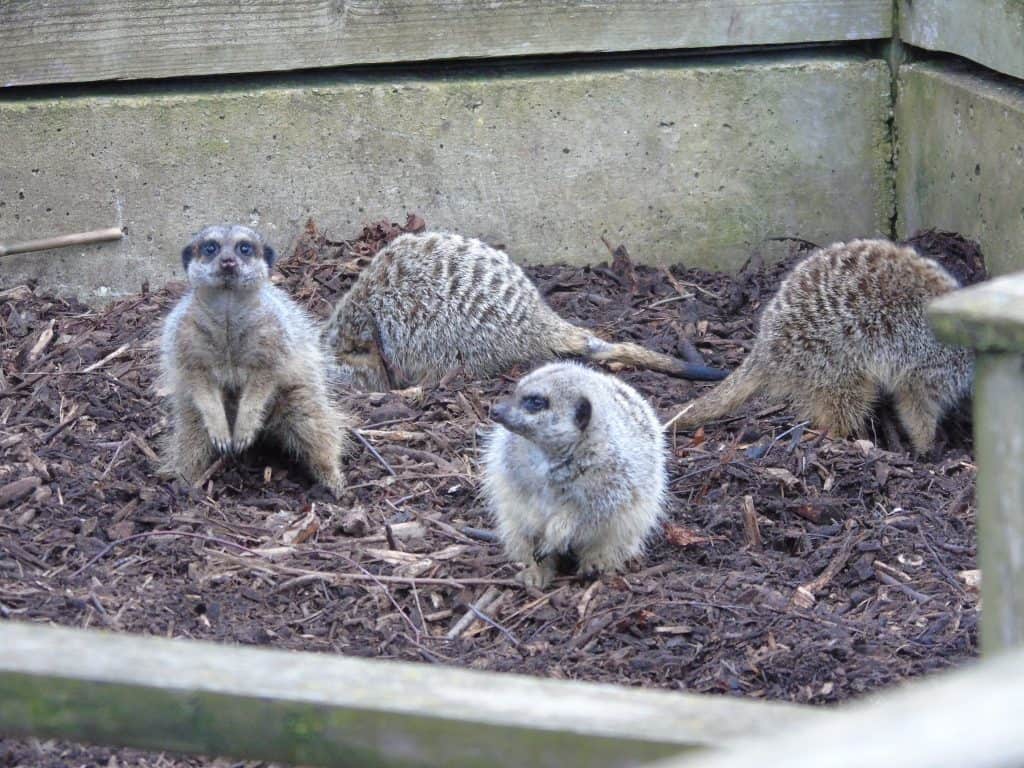
Meerkats will utilize several different burrows and move from one to another, each burrow is an extensive tunnel and room system that remains cool even under the broiling African sun with some being as deep as 2 meters.
Females give birth in one of the group burrows. Mob members rely on each other, working together a few will typically serve as lookouts, watching the skies for birds of prey such as hawks and eagles. I’ve watched this behaviour happen with our group, normally it happens when a plane is slightly lower than usual or when there is a buzzard in the distance, a sharp shrill call is made and the all run for cover.
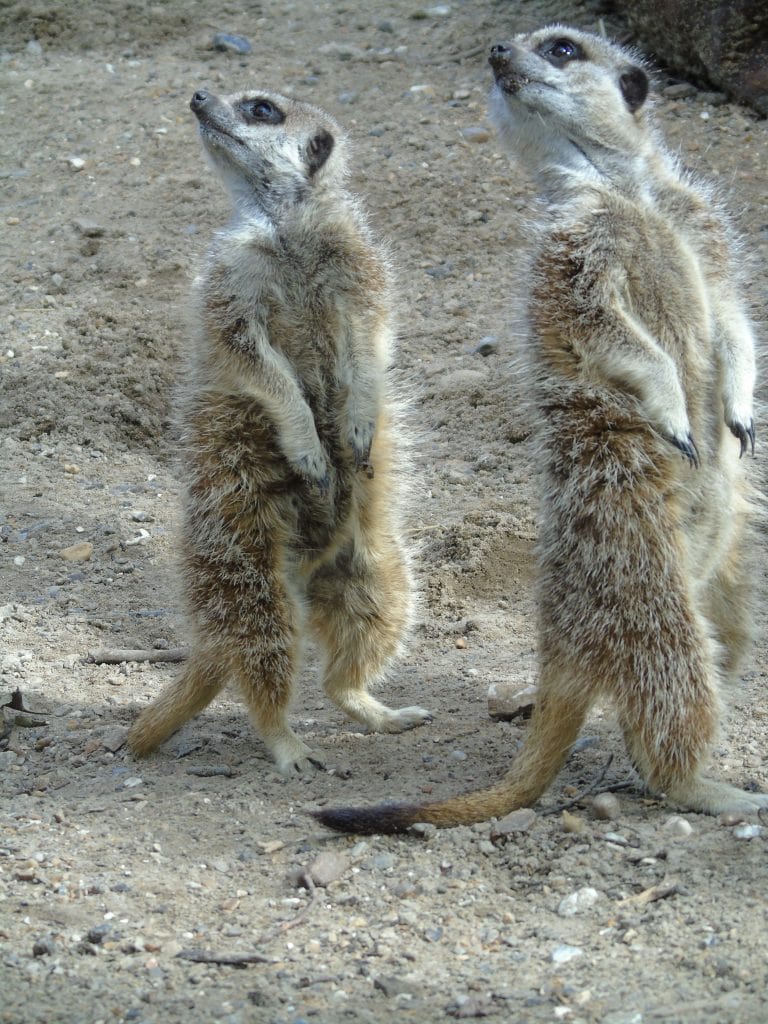
Threats
Fortunately for meerkats they seem to be doing all right in the wild at the moment. They are listed as least concern by the International Union for Conservation of Nature‘s (IUCN’s) Red List of Threatened Species.
There are currently no major threats to the animals, and their populations are doing well. Movies and television shows have brought meerkats lots of attention though, with many people wondering if they can have them as a pet, which of course no you can’t! Although they may look cute, meerkats like all wild animals do not make good pets and are illegal to own without the proper permit and licenses.

If you want to get closer to these adorable characters consider a unique meerkat encounter instead here at the park so that you can get to know them all for yourself. For now I will leave you with this cute snoozy little one- a growing pup needs their rest after all!


